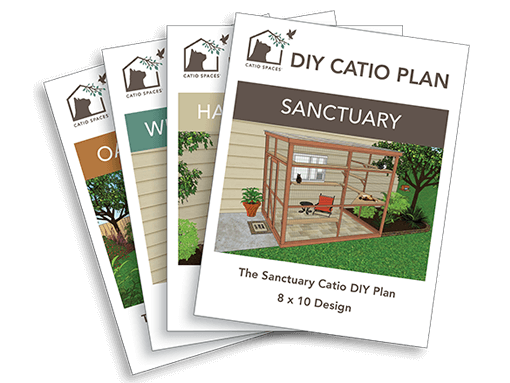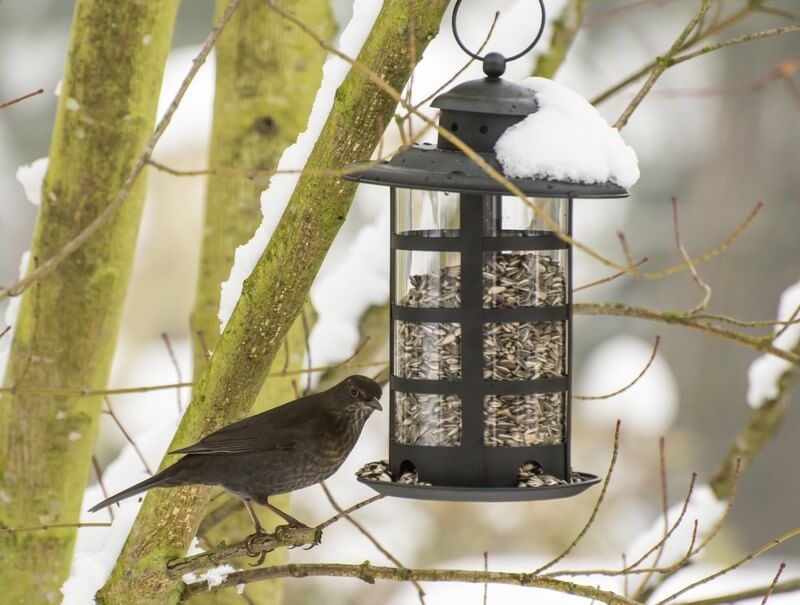
Fall is a wonderful time of the year. The beautiful oranges, yellows and reds of the leaves are always an inspiring sight. Before we know it, though, the crisp fall air will turn into the chills of winter in many parts of the country.
Just because it’s cold outside doesn’t mean your cat can’t enjoy their catio. By starting early with winterizing your catio, you’re sure to make a cozy and stimulating place for your cat to enjoy the winter months.
Adding a bird feeder can be a fantastic way to both enrich your cat’s winter view and help the song birds near you enjoy a healthy and safe winter too. This is more important now than ever with reports that North American bird populations have decreased significantly over the last 50 years.
So today I’m diving into some top considerations when setting up a winter bird feeder near your catio and indoor windows. It’s the best cat TV ever!

1. Pick a feeder type to attract native birds:
Different feeders will attract different types of birds. Consider adding a few feeder types to your yard to attract several species of birds for your cat’s viewing pleasure. There are a wide variety of feeders Audobon.org encourages you to consider:
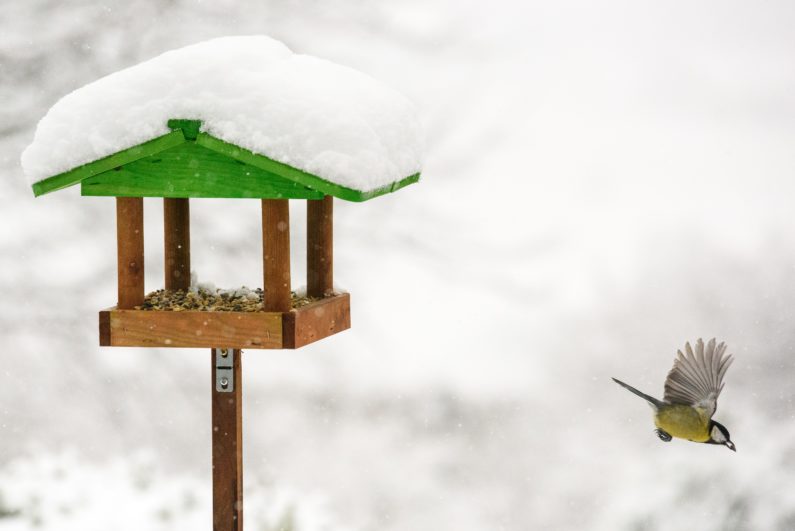
- Platform or ground feeders: These can sit on top of poles or on the ground and are favored by doves, juncos, sparrows, cardinals and more.
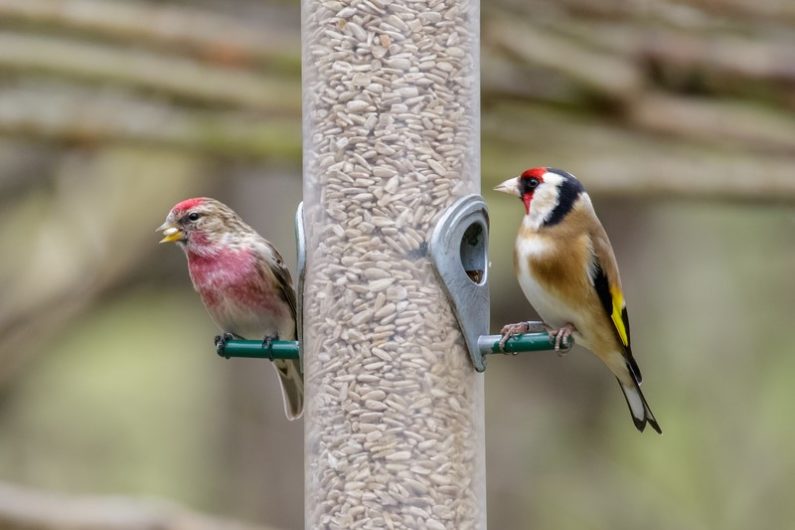
- Sunflower-seed tube feeders: Audobon.org notes, “These feeders are especially attractive to small birds such as chickadees, titmice, nuthatches, goldfinches, siskins, and purple and house finches.” Just be sure to hang them at least 5′ off the ground to deter other wildlife.
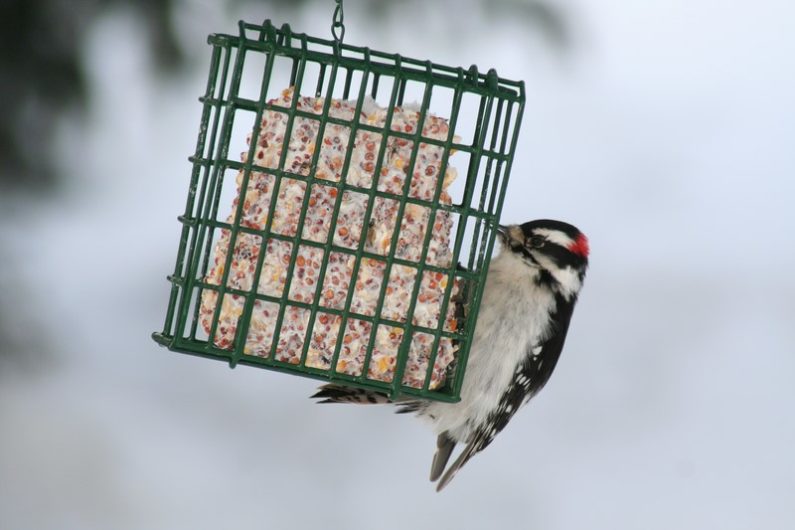
- Suet feeders: A favorite of DIYers, suet feeders can be bought at the store or made out of readily-available items like pine cones. Titmice and woodpeckers flock to these while wrens, creepers and warblers will stop in from time-to-time.
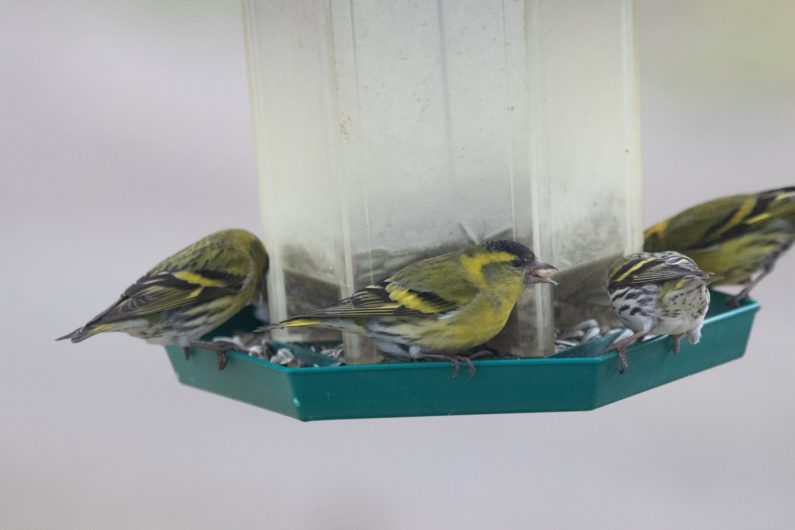
- Hopper feeders: “Hopper feeders attract all of the species tube feeders attract, as well as such larger birds as jays, grackles, red-winged blackbirds, and cardinals,” according to Audobon.org. They’re also a favorite for many households that can’t refill feeders as often since you can add a few pounds of food at one time.
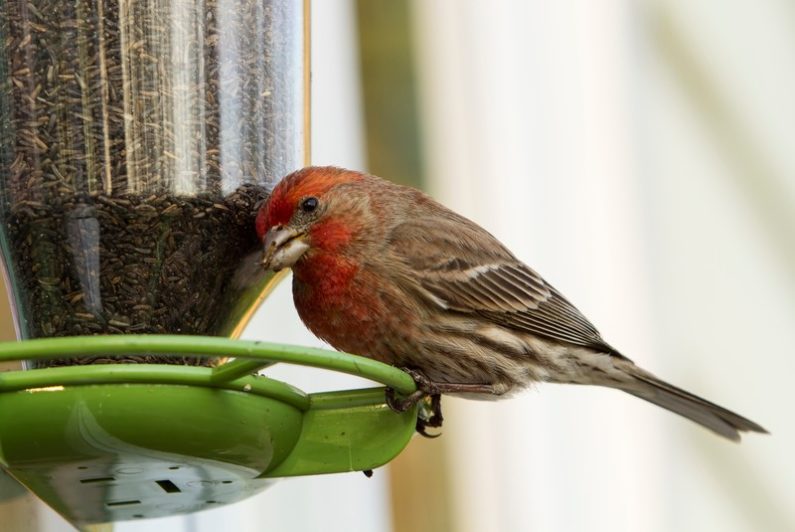
- Thistle feeders: Best for attracting small-beaked birds like goldfinches, pine siskins and redpolls, the wood or metal versions of these feeders are much more critter-resistant. If you’re concerned about squirrels, raccoon or other animals, go with a sturdy material.
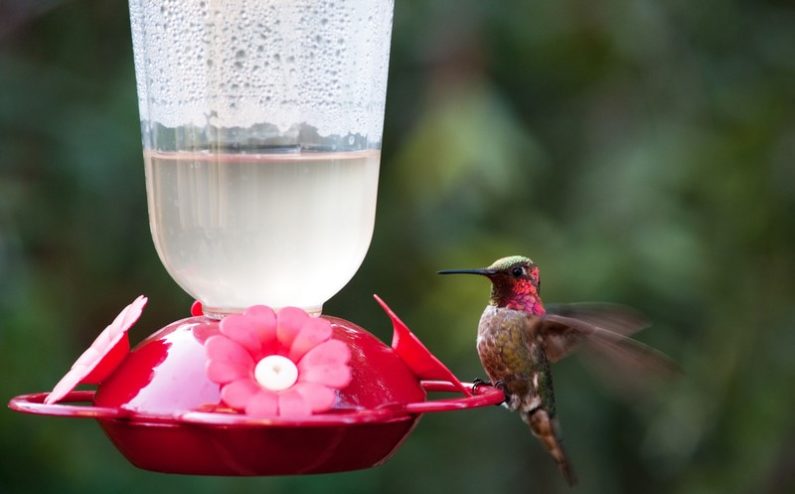
- Hummingbird feeders: Filled with sugar water, these aren’t great for winters that stay below freezing, but some U.S. climates get hummingbirds that winter there. (Check out their migration patterns here.) If you live in an area where they do, hummingbirds can be a sweet little surprise in any winter garden and a great choice for keeping pests away.
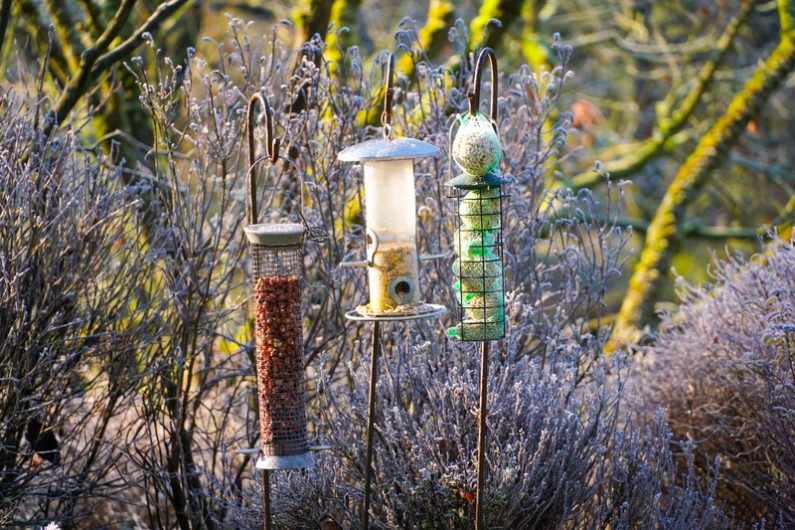
2. Match the right kind of bird seed to the feeder:
Once you’ve picked out your ideal feeder(s), make sure to get a high-quality mix of the right kind of feed.
-
- Suet feeders are great for heartier mixes that help sustain birds through the cold months. You can either buy pre-made suet cakes or create your own that offer sources of high-energy foods some birds need to survive the cold months.
- Platform feeders can easily be spiced up with some extra goodies like dead bugs (purchased from a pet supply store), fruit and bigger nuts.
- Other feeders may suggest a specific type of food like thistle or sugar water. Here are some more ideas for types of food and which birds seek them out and more simple tips for picking the right food.

3. Create a plan to deter squirrels, raccoons and rats:
If you don’t mind squirrels stopping in for a nibble, you may want to set up an easier-to-access platform filled with peanuts to attract them and keep them away from the bird feeders. Cone squirrel baffles can be added to feeder posts that you want to keep for birds-only and I’ve also found a bit of cooking grease rubbed on the post weekly can help keep other critters away. Make sure to consider other angles of attack as well – I once watched a determined chipmunk spend 20 minutes trying to figure out how to jump from a surrounding tree onto my feeder!
4. Put a monthly cleaning on your calendar:
Winter bird feeders can attract a lot of birds which means they can get really dirty. Be sure to schedule a regular cleaning of each feeder a few times throughout the winter to avoid decaying food, mold and other issues.
5. Add a shallow, heated, water bowl nearby:
Winter weather often spells dehydration for birds whose water sources have frozen over. To really make the birds happy, you can add a small, shallow water bowl on more temperate days, or even get a shallow heated water bowl to make sure they always have access to clean, fresh water. Just as with the feeders, these should be cleaned regularly.
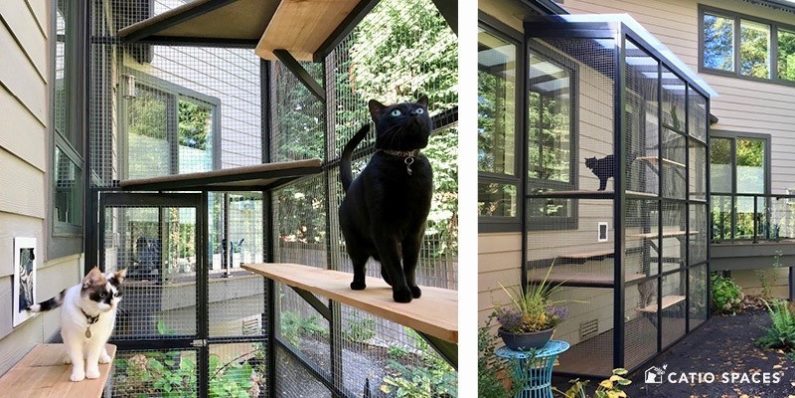
Brina, Gink and Griffon enjoy fresh air and bird watching while safe outdoors in a catio designed by Catio Spaces.
Bird watching near birdfeeders is a favorite pastime of many cats and can enrich your cat’s life—and yours—in the colder winter months and all year long. Your cats and the wildlife in your backyard will thank you for it!
Learn more about catios here or order one of our DIY catio plans today to get started!
And, as always, life is good in a catio!

 Cynthia Chomos is a
Cynthia Chomos is a 
